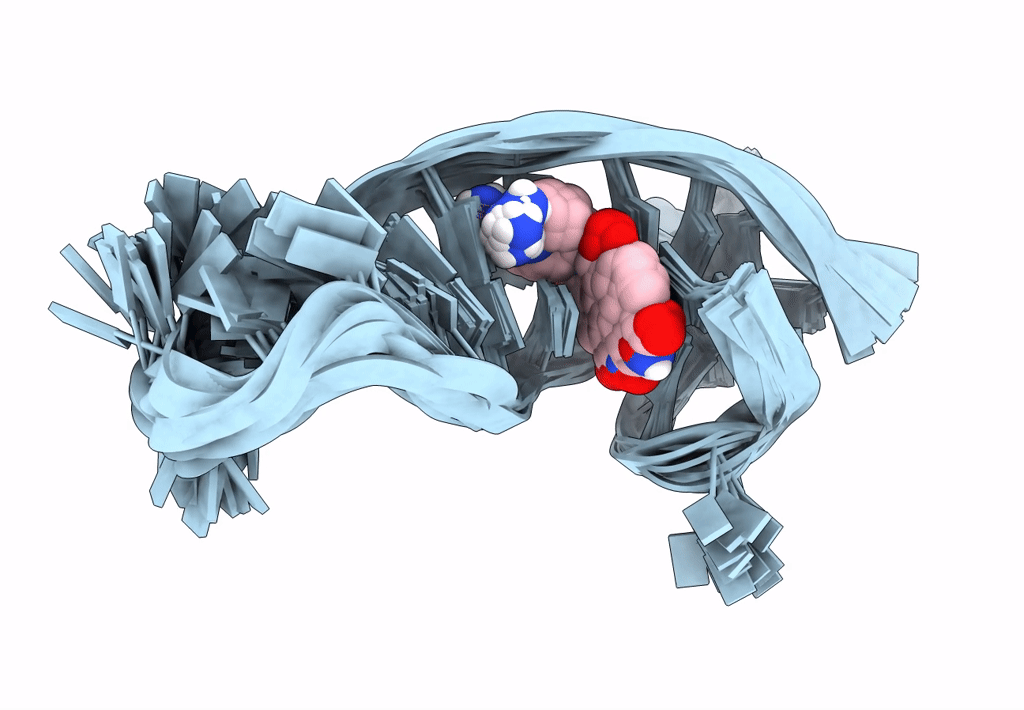
Deposition Date
2023-02-27
Release Date
2023-06-28
Last Version Date
2024-05-15
Entry Detail
PDB ID:
8IJC
Keywords:
Title:
NMR solution structure of the 1:1 complex of a platinum(II) ligand L1-transpt covalently bound to a G-quadruplex MYT1L
Biological Source:
Source Organism:
Homo sapiens (Taxon ID: 9606)
Method Details:
Experimental Method:
Conformers Calculated:
100
Conformers Submitted:
15
Selection Criteria:
structures with the lowest energy


